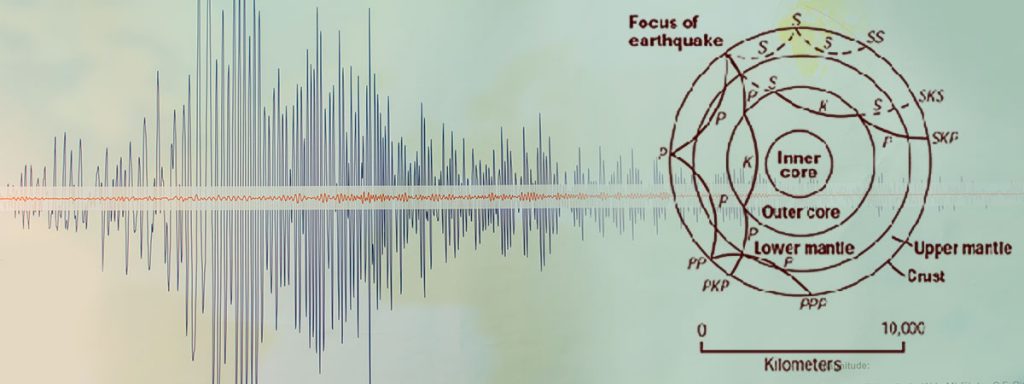
Current Earthquakes
what is happening with our earth?
Oldest seismograph records detonation at 09:19:28 a.m.
There it is in white and black, scratched into soot: At 09:19:28 a.m. Central European Time, the bomb – or whatever is was – detonated in Leinetal. “At first, I thought it was of a local earthquake”, says Wilfried Steinhoff, the technical supervisor of a metrological wonder. After all, the exact time of the explosion in Pfalz-Grona-Breite and its magnitude were recorded by one of the world’s oldest seismographs still in operation.
Since then, the mysterious accident has given the scientists at the world’s oldest geophysical institute an interesting change in daily routine. They precisely calculated the magnitude of the event that occurred at a distance of 3.34 km from the seismograph: 0.4 µm amplitude for the body wave and 1.1 µm amplitude for the surface wave. This corresponds to a magnitude of 1.5 on the open Richter magnitude scale for earthquakes.
Moving 17 tonnes with a breath of air
As evidenced by the seismograms produced by the seismograph, which has been continuously recording seismic movements since 1904, such events are quite common. “They occur perhaps once or twice a month”, seismologist Dr. Jochim Ritter says. “When a potash mine shaft caves in in Thuringia, when karst topography collapses or quarries blast in Vorharz, the needle will record it on sheets of smoked paper still produced by hand. Soot offers the scratching needle the least resistance”, Steinhoff explains.
Once built for Göttingen’s leading authority on seismology, Emil Wiechert (1861-1928), the precision of the historical equipment is still astonishing. The 17-t mass, a huge bucket filled with barite, rests on a tip of only a few millimetres thickness, even when the earth is quaking. The resulting ground movements are then recorded on the smoked paper. Steinhoff gladly demonstrates the sensitivity of the colossus: He pumps his lungs full of air, blows at the bucket, and the needle moves instantly.
Elmar Rothert, student of geosciences, has examined the recordings of 30 December a bit more seriously. He compared it with the dud detonation of 21 December 1992 at the Schützenplatz and found: The bomb at the Schützenplatz was somewhat stronger with a magnitude of 1.7 (compared to 1.5).


